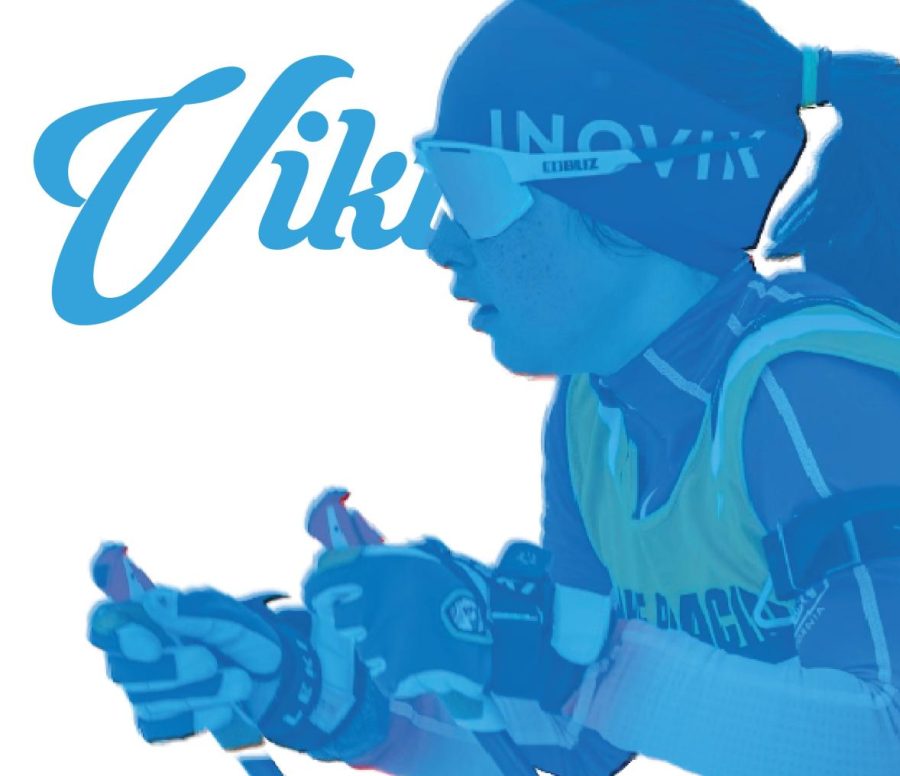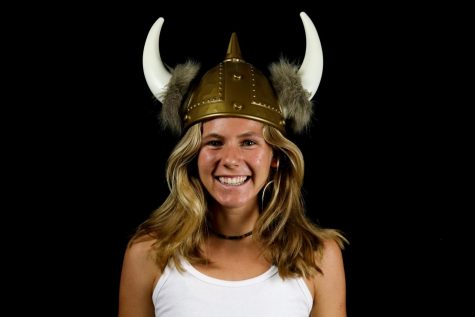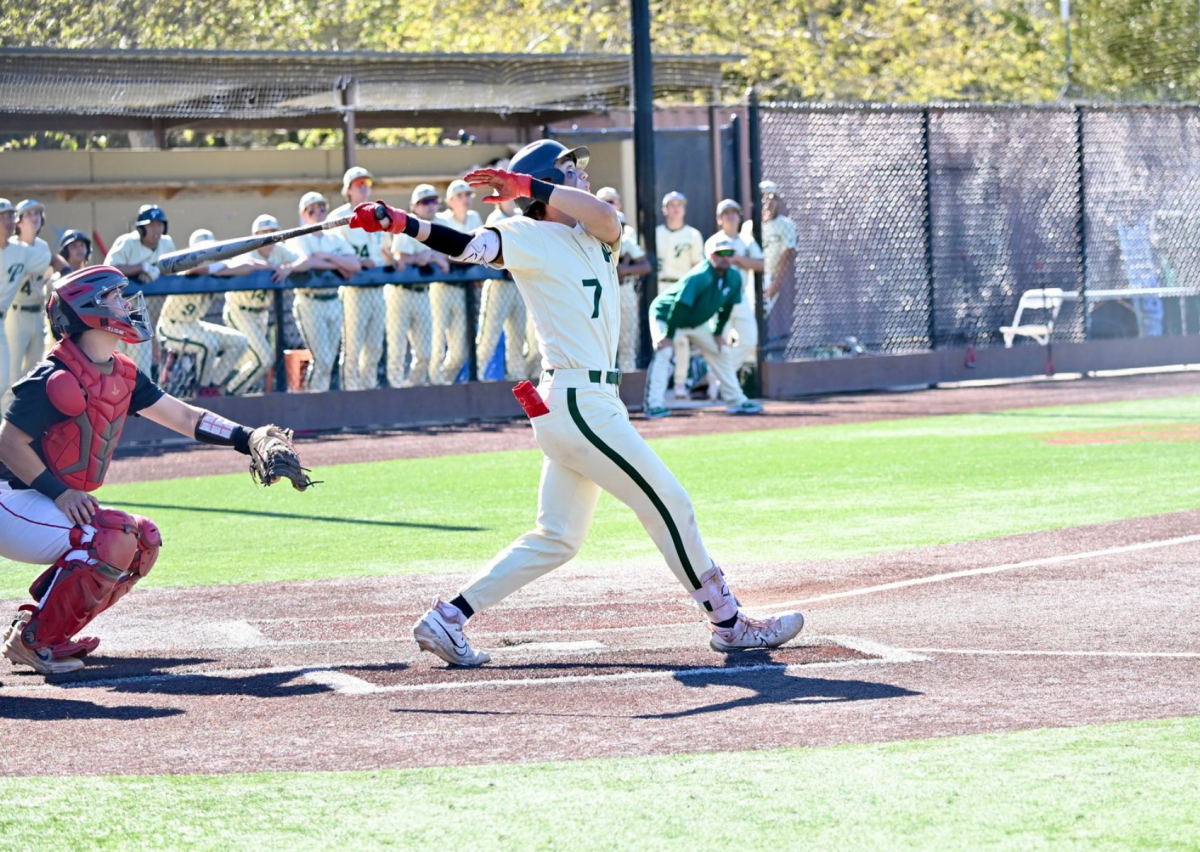Breaking Boundaries: Biathlon
December 19, 2022
In the Scandinavian countries of Norway and Sweden, the yearly average temperature is 46 degrees Fahrenheit. The coldest ever recorded temperature is 63 degrees below zero. To put that in perspective, at 45 degrees Fahrenheit, human breath condenses. At 32 degrees, the molecules in water freeze. Once the temperature dips below five degrees, our toes, fingers, and noses can turn the icy blue of frozen flesh.
Two and a half centuries ago, soldiers on the border of the two countries stayed warm, trained, and entertained themselves during the winter months by combining cross-country skiing on the beautiful expanses of freshly-fallen snow with sharpshooting; testing their skills against one another in friendly competition. Today these skiing-shooting competitions have evolved into a popular modern sport in hundreds of countries around the world. Its name? Biathlon.
Biathlon is a winter sport that combines shooting with nordic (cross-country) skate skiing –– a criss-cross pattern of skiing on groomed tracks. In 1924 in France, biathlon appeared for the first time in the winter Olympics. The race breakdown went as follows: a 20km skiing course (skied over five 4km laps) with four shots after each lap. The shooting occurred on a 50m range and alternated prone (lying down), standing, prone, standing, prone, by lap, with a fixed time penalty added for each missed target (see graphic below). The athletes started in staggered time and the total penalty minutes were added at the end to their final time.
Nowadays, the sport of Biathlon has evolved significantly. It includes the original event breakdown as well as a sprint version, a super sprint version, and a “mass-start” version (where the start is not staggered and the penalty for missed shots is a 150-m lap rather than added time). In more recent years, a biathlon relay (both mixed and single-gender) has also been added.
Since its creation, biathlon in Europe has experienced growing popularity. In the United States, however, it is still not very well-known. Finding locations and teams to train and compete with is a major obstacle. Fortunately for those in the Bay Area, the Auburn Ski Club (ASC) is located in Soda Springs, California (a 15-minute drive west of Truckee) and offers biathlon teams a place to train –– alongside the more typical activities of alpine and nordic skiing and snowboarding.
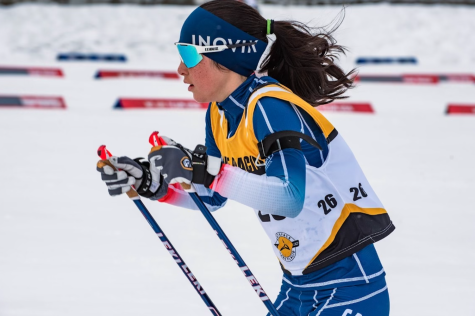
The ASC biathlon team (composed of individuals of all genders and ages) is coached by Dan Warren, who has been a part of the sport for over 20 years, but only started coaching biathlon for ASC this past year. In his younger years, he was primarily a downhill skier and worked as a Ski Patrol director in the Tahoe area. He also has a background in Nordic skiing and has participated in many such races. After retiring from his position on the Ski Patrol, he worked as head groomer for ASC and continued to race biathlons, both at the national level in the US, and internationally for the Masters Olympic Games. That is, until he took the job as head biathlon coach for the club.
“The reason I took the job is that I enjoy the comradery of the biathlon family,” Warren said. “Even at the world cup level, all the athletes speak highly of the ‘biathlon family’ and that extends down to our local club. I also enjoy seeing biathletes when they have successes and share in their excitement when they perform well.”
Megan Lemoine, a Paly sophomore, has the luck of being able to be part of the wonderful biathlon family of ASC. With a splash of freckles, a soft voice, and a polite demeanor, Lemoine seems like a typical 15-year-old high-schooler. But Megan’s participation in biathlon sets her apart. In the winter, while thousands of other Palo Altans take I-80 across Donner pass and onto the slopes of Tahoe for alpine skiing and hot chocolate, Lemoine is different. She sets out on the slopes with Fischer skis strapped to her feet and a .22 caliber änschutz rifle slung over her shoulder.
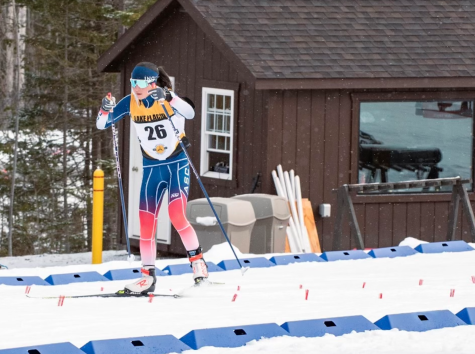
Unlike better-known sports like basketball and football, biathlon is not offered at high schools in the U.S. and is a far less popular recreational winter sport than your typical alpine skiing. Because of this lack of publicity, Lemoine fell in love with the sport not through her school, but partially through family influence and partially through serendipitous timing.
“My dad always really liked biathlon,” Lemoine said. “We started watching the [Biathlon] World Cup together and over the pandemic learned that there was a range near us.”
The “range” refers to the shooting course, a necessary aspect of biathlon. Due to strict gun and shooting range regulations within the U.S. and especially California, it is often difficult to find safe and well-maintained ranges to practice shooting. Furthermore, proper cross-country skiing areas are less common than downhill slopes. Lemoine feels fortunate to have discovered the ASC.
“It’s a very small team,” Lemoine said. “On the cross country skiing side there are quite a few girls my age but on the biathlon side I’m the only girl in my age group. There’s one other boy in my age group who comes consistently; it’s small.”
Warren notes that although the number of members on the team is small, biathlon is a growing sport in the US, especially for women.
“ Women’s biathlon is the number one watched [winter] sport in Europe and the interest is growing a lot in the USA — Dan Warren
So, despite its small size, the ASC adequately provides Lemoine with a physical location to train as well as the emotional support and advice of coaches. Based on the International Biathlon Union (IBU) standards, and according to the coach, the club is a unique training ground for aspiring biathletes.
“We are the only [biathlon course/range] on the West Coast,” Warren said. “[It’s] at a very high altitude: 7,100′ (IBU limits ranges to 5,900′). We also receive more annual snow than any other range in the world (354″) [and] have the luxury of having 7 nordic ski areas [in Tahoe area] within a 45-minute drive of each other.”
Because two different complex components comprise the sport –– skiing and shooting –– each practice at the ASC looks a little different, and Warren uses the support of various coaches, all of incredible merit in the biathlon world, to provide her with what she needs.
“I have ski training coached by our Nordic coach, Gus Johnson,” Warren said. “Some of the others in Megan’s age group use coaches from Sugar Bowl academy and Tahoe City XC. I also use coaches Glenn Jobe (1980 olympic biathlete) Dave Eastwood (US Master gold medalist) Carol Lyda (deceased husband was the US biathlon coach at the 28th Olympic games), [and] Jordan McElroy, former National Biathlon Team member. I am good at the big picture of range safety, maintenance, and general coaching, [but] I use a lot of resources to give all the athletes the best coaching available outside of US national team coaching.”
Lemoine trains with the ASC on weekends throughout the winter months and thoroughly enjoys the complexities and challenges each practice provides.
“For a biathlon practice, we set up the range first, and then zero our sites to make sure they are working for the conditions,” Lemoine said. “If it’s a precision practice, then our coaches will work with us one-on-one with drills, but if it’s a more general practice it will be [ski] combos or intervals; we go on our own, ski around and then come in. The course is pretty hilly so the skiing is really fun but also really tiring. Also, we do mini shooting competitions and games that are really fun.”
B ecause biathlon is a winter sport, it is important that biathletes stay in shape during the offseason months, both in terms of cardiovascular health as well as in terms of skiing and shooting skills. Fortunately, Warren notes, there are many ways to do this.
“Cross country running, hiking in the mountains (a favorite for Europe world cup level biathletes), cycling, both road and or Mountain bike, core work, and roller skiing,” Warren said.
Roller skiing is typical of biathletes because it provides technical skiing practice as well as cardio. Roller skiing is when skis have wheels instead of metal edges and are used on hard surfaces like paved streets. It emulates the criss-cross action of biathlon skiing. During the biathlon offseason, Lemoine mixes this with other forms of cardio.
“When I’m [in Palo Alto] I’m running and roller skiing around the neighborhood,” Lemoine said.
Despite the benefits of roller skiing, Warren points out that, unlike keeping up shooting technique, keeping up skiing technique with roller skis is not imperative during the offseason.
“There are some high-level biathletes who roller ski very little but keep their cardiovascular system in condition by using other training but all [biathletes] shoot in the off-season,” Warren said. “Summer is where we concentrate on shooting drills, position in prone and standing, concentration and rifle set up and fit for the individual athlete.”
While some go to shooting ranges to practice firing in the various positions with live rounds, others, like Lemoine, “dry fire,” usually at home. This simulates the discharge of a gun but without the danger of bullets, and helps to maintain some of the skills required for accurate marksmanship.
“Dry fire drills are very important to strengthen the entire muscular system to keep the rifle as quiet as possible while you just stress your whole body by skiing hard,” Warren said. “Standing dry fire drills are vital for success during the season. There is a noticeable difference between those who practice and those who do not. Dry fire also makes getting into position to shoot an intuitive process, although it may look easy it can take several years for some athletes to have a process from skiing with a rifle on their back to a safe, stable shooting position in a matter of seconds.”
The importance of keeping in shape technically and physically ensures that come winter season, athletes are ready to race. Lemoine, through ASC, is able to race multiple times a year.
“I started competing two years ago,” Lemoine said. “Most of what I do are just among the club members [but] last year I went to Nationals.”
Lemoine is following in the footsteps of former ASCbiathlete Joanne Reid, who graduated from Gunn High School in 2009. Reid competed at the 2018 Olympics, where she raced the sprint and individual, placing 86th and 22nd, respectively. Four years later, she competed in the 2022 Winter Olympics, adding the pursuit course to her spirit and individual events. She finished 29th, 34th, and 57th, in those respective events.
Reid started out as a nordic skier, not a biathlete. In high school at Gunn, she ran cross country and track and skied on the weekends in the winter.
“People thought I was constantly on downhill ski vacations, and my friends would ask why I could never hang out on weekends,” Reid said. “I was training high hours as a nordic skier in high school. I would leave during my class-free periods a
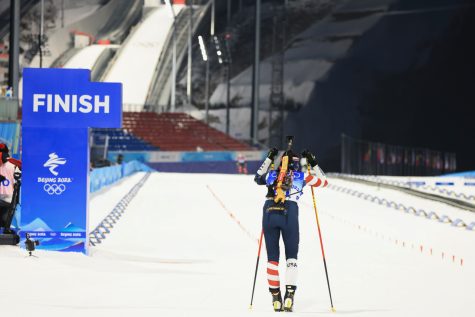
nd train (roller skiing) in Los Altos Hills and come back to class afterward. Then I would go to running practice after school.”
This commitment to
Nordic skiing meant Reid often had to sacrifice other aspects of her life.
“[Training] took all of my time,” Reid said. “I lost some friendships to this, so the ones that lasted are more meaningful to me.”
During her senior year of high school, Reid was recruited to the University of Colorado at Boulder for cross-country skiing on full scholarship. She went on to win an individual NCAA title in 2013, and graduated that same year with a degree in applied mathematics. Growing up in snow-free Palo Alto, the recruitment for skiing as well as the NCAA win came asa shock to many, both abroad and at home.
“When I tell people I grew up four hours from [the] snow they look at me like I have two heads,” Reid said. “Even funnier, my student counselor didn’t believe me when I said I was being recruited –– in her defense, who recruits skiers from places with no snow? –– and told me if I did not have a colored envelope, I probably wasn’t [being recruited]. I did not get a colored envelope. I did get a scholarship.”
Biathlon is currently not an NCAA sport, primarily because of the safety concerns that arise with shooting. This means that high school biathletes, like Lemoine, will not have the opportunity to compete collegiately. It also means that the US biathlon team often has to recruit elite cross-country college skiers that are willing to switch to biathlon in order to fill their roster. This was the case for Reid.
As a member of Team USA, Reid went to two rounds of Olympic Trials as well as two Olympi
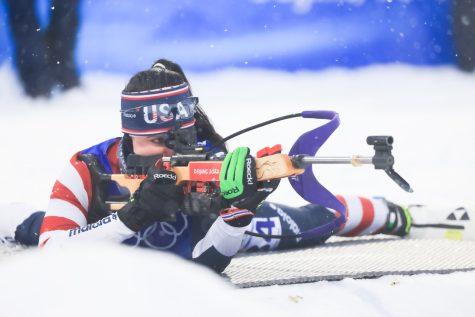
c Games, in 2018 and 2022. According to Reid, these experiences were intensely competitive and pressurized. And although rewarding in the end, they are also memorable for other reasons.
“I would not describe [the Olympic Trials] as any type of fun,” Reid said. “There is a lot on the line at a trials event. People can spend their entire career fighting for a start at the Olympic Games and still fail. I had friends and teammates who failed, and I think no less of them than those who wore the Stars and Stripes with me.”
There is a lot on the line at a trials event. People can spend their entire career fighting for a start at the Olympic Games and still fail. I had friends and teammates who failed, and I think no less of them than those who wore the Stars and Stripes with me — Joanne Reid
n 2018 at Pyeongchang and again in Beijing in 2022.
“Both [olympic]] venues were brutally, ferociously cold and savagely windy,” Reid said. “That’s a tough situation for a precision marksmanship sport — the wind [changes] bullet trajectories, dressing for cold affects mobility in shooting positions, and freezing a trigger finger mid-competition almost certainly means misses. It was a struggle to stay warm out there [in] both places.”
Beyond the difficult weather conditions, the Beijing Olympics were particularly memorable because they occurred during the Covid-19 pandemic, creating a strange, surreal environment for the athletes.
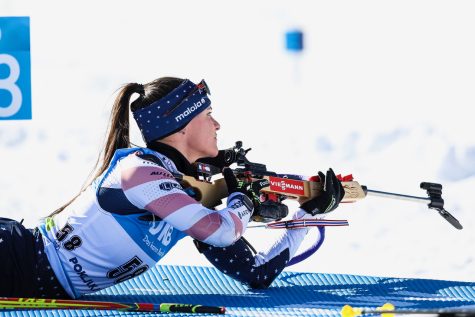
“Covid made it bizarre in so many ways — we took a covid test every single day, without exception,” Reid said. “There were no spectators allowed, we couldn’t leave the closed loop of the village. Every single volunteer and worker in the village was head to toe in disposable one-piece outfits, complete with booties, gloves, masks, and face shields. It had the bizarre effect of making everyone just look otherworldly — coupled with the extreme cold, isolation, and ban on visitors and spectators, we may as well have been on the moon.”
Reid notes that harsh weather and Covid complications notwithstanding, competing in biathlon at the Olympics was a mentally challenging and spiritually rewarding experience.
“The eye of the world turning towards you for a month of difficult competitions is never easy, especially in a sport that has such a major mental component,” Reid said. “It’s easy to get derailed by nerves, but that difficulty is what makes it both fun for us to do, and exciting to watch.”
If I am going to encourage someone to start a sport, I would like to be proud of it. And I am absolutely proud of biathlon. — Joanne Reid
“She had a great college skiing career,” Lemoine said. “Now she is an Olympic Biathlete and a World Cup Biathlete even though she didn’t necessarily have as much time on snow as other people did.”
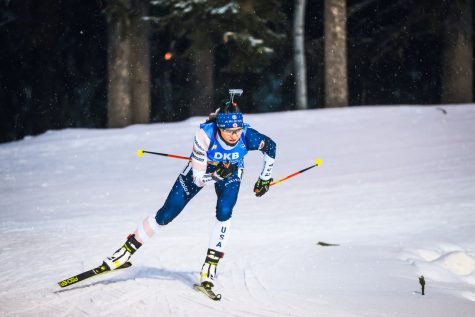
Biathlon has existed for over three centuries. It has expanded its reach and is growing in popularity in many countries. It has grown from one event –– the individual –– to now include many variations, most notably relays. It is leading the frontier in terms of equal pay and viewership a
cross genders and pushing the boundaries of human limits.
The sport puts athletes in snow-white expanses, in harsh, windy, cold conditions. Biathlon forces athletes to calm their breathing, still their heartbeat, and hit a pea-sized target fifty meters away. It combines an intense physical event with an incredibly mentally difficult skill. In the eyes of Lemoine and Reid, there is no better sport for people to do.
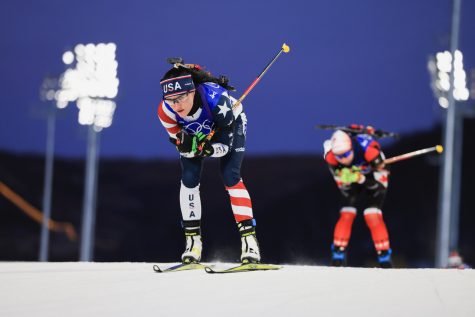
“If I am going to encourage someone to start a sport, I would like to be proud of it,” Reid said. “And I am absolutely proud of biathlon.”



